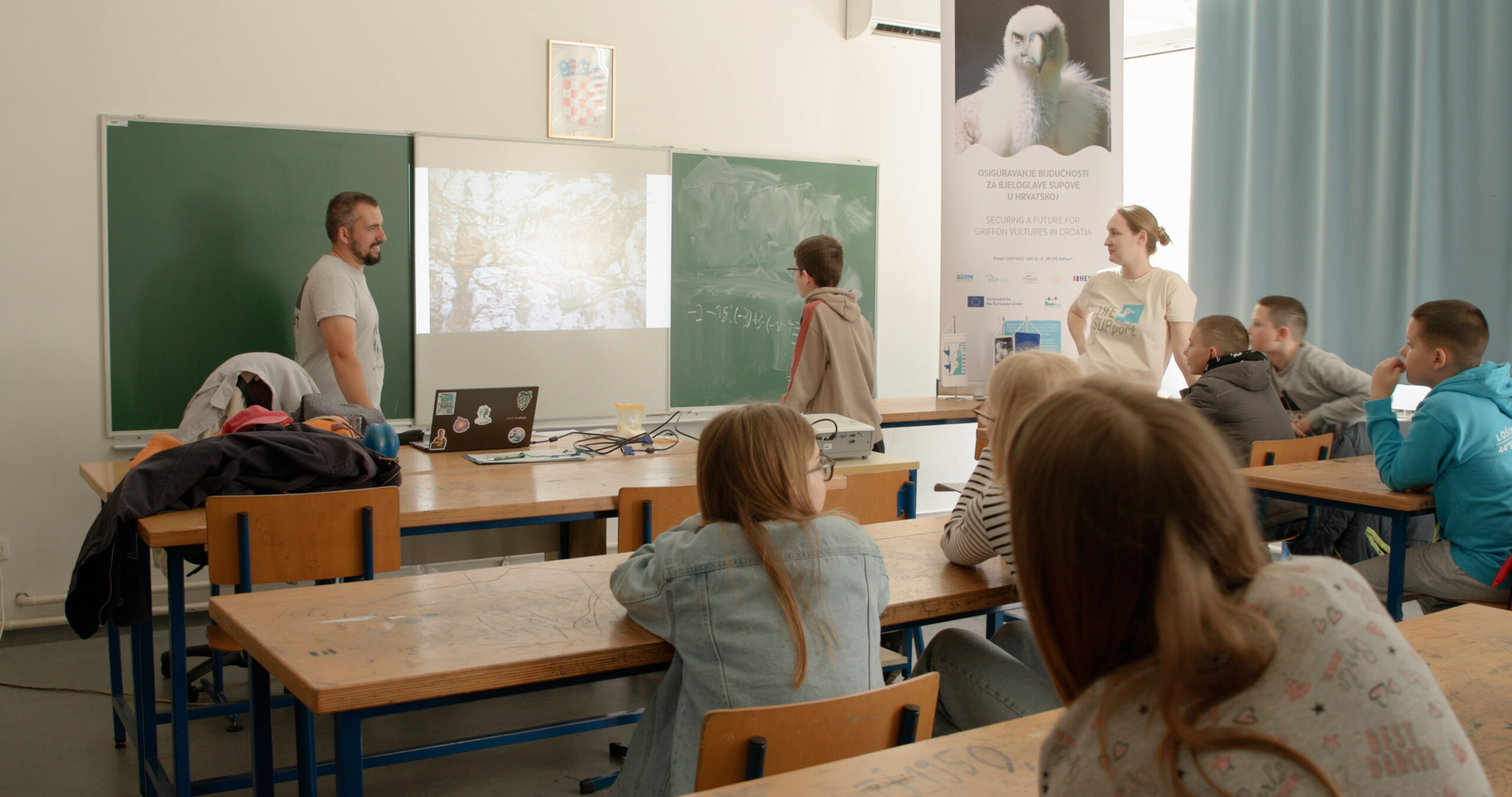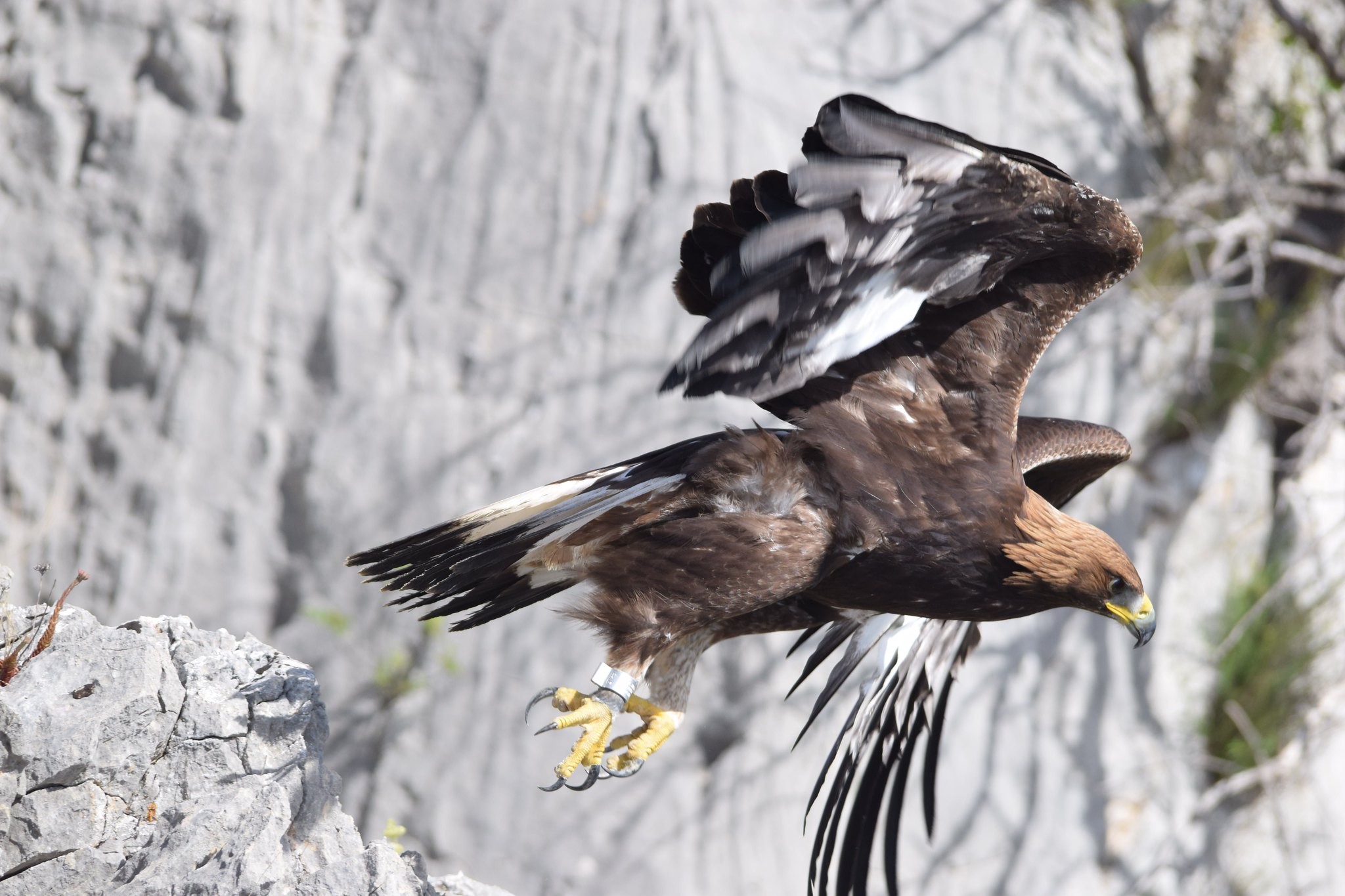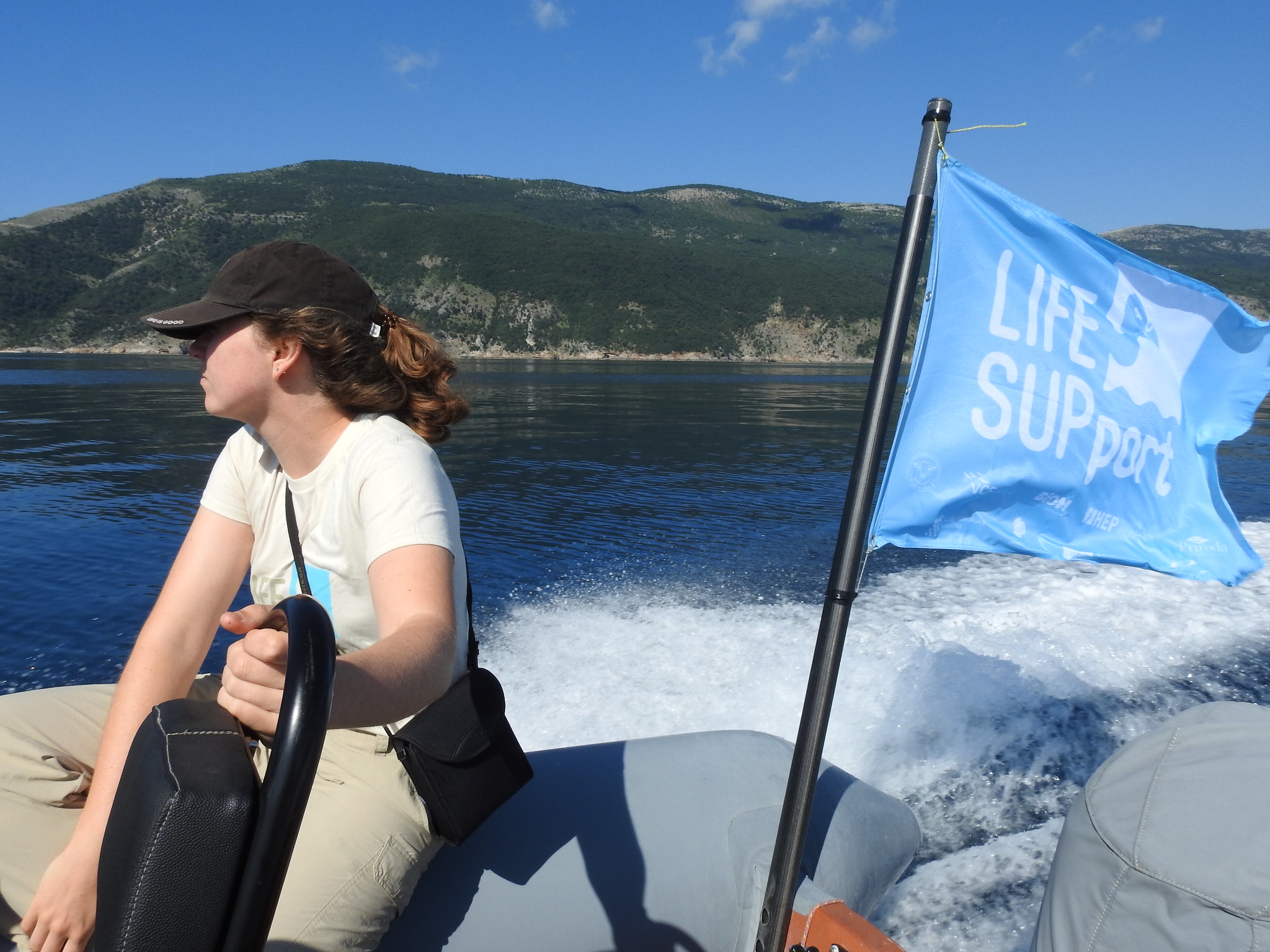On the occasion of the World Bee Day, we bring you an interesting experience from a study trip in the Netherlands
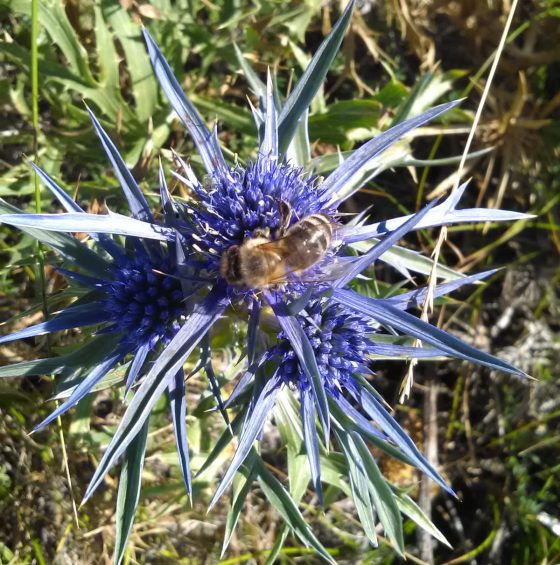
Pollinators are animals that transfer pollen what results in fertilization and fruit/seed formation. Although mammals and birds can be pollinators, the most important and numerous pollinators are various insects such as butterflies and bees.
The best-known bee species is the European honey bee (lat.
Apis mellifera). However, there are also many other families of bees, some of which live in groups, but a large number are solitary bees. They, as their name suggests, spend most of their lives alone, except during mating season. After mating, they lay their eggs in hollows in the ground, rocks or drill holes in trees. For example, the buff-tailed bumblebee (lat.
Bombus terrestris) build nests in the ground, same goes for mining bees from the large Andrenidae family. With the disappearance of grasslands and their overgrowth into woody vegetation and the creation of larger amounts of humus and leaf humus, there is a loss of suitable dry and loose soil that bees use, which is why their numbers are declining. Activities such as the removal of undesirable woody plants from dry grasslands and habitat restoration, returning these areas to their natural conditions, increase the presence of suitable habitats for bees that nest in the soil.
We encountered an interesting example of the coexistence of bulls and bees that live or nest in the soil and work together to increase biodiversity in the Netherlands, where we participated in mid-May in a study trip organized by Eurosite, a European organization whose goal is to connect different sectors in nature conservation. The topic of the study trip was natural grazing, which is the main tool of rewilding – a set of activities that aim to restore the area to as natural condition as possible, like it should be.
Northeast of Arnhem, in the area of the Veluwezoom National Park, we visited areas of dry grasslands and heaths. They are dominated by heather and various grasses, along with some pine groves. This area was created during the last ice age when the glaciers pushed and piled up material, soil and sand in front of them, thus creating
moraines (sediments) raised from the rest of the terrain. The national park is privately owned by the organization Natuurmonumenten, which maintains the grasslands through grazing. For grazing, they use Scottish highland cattle, which are hardy and resistant to weather conditions and do not need shelter from rain, snow and cold.
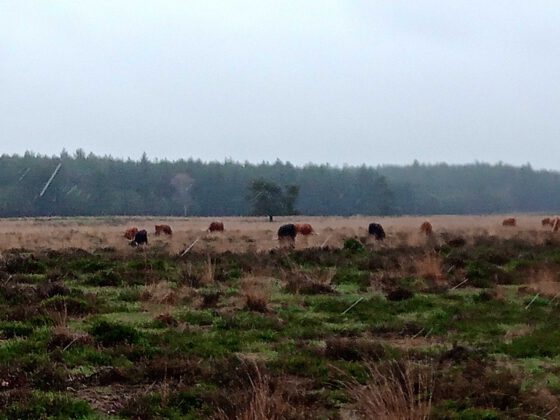
What connects Scottish Highland cattle with bees and how did they come up with a method to increase the number of bees?
The method of increasing the number of bees was unintentionally implemented, and they were delighted with the positive result of increased number of solitary bees, which nest in holes in the ground and sandy aeolian drifts. Quite by chance, because the bulls, of which there are several in the park, make their “observation towers” and “fighting grounds” in elevated locations. Each bull has its own location and protects it from other bulls. In these areas of sandy soil, bulls create large pits – plate-like bare areas without plants – which are quickly populated by solitary bees that dig tunnels and nest in the soil. Other areas are covered with grass or heather, which leaves the “battlefield” areas almost the only suitable habitats for bees that live or nest in the ground.
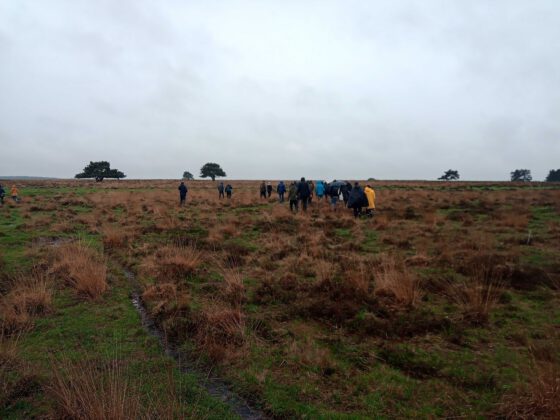
As the bulls move through their territory, they carry the seeds of various plants on their hooves and hair, thus spreading them throughout the park. Larger amount of flowering plants contributes to a greater number of bees, which consequently contributes to better pollination and plant reproduction.
The coexistence of bulls and bees, two different species in the same area, resulted in an increase in the biodiversity of this protected area.
 Pollinators are animals that transfer pollen what results in fertilization and fruit/seed formation. Although mammals and birds can be pollinators, the most important and numerous pollinators are various insects such as butterflies and bees.
The best-known bee species is the European honey bee (lat. Apis mellifera). However, there are also many other families of bees, some of which live in groups, but a large number are solitary bees. They, as their name suggests, spend most of their lives alone, except during mating season. After mating, they lay their eggs in hollows in the ground, rocks or drill holes in trees. For example, the buff-tailed bumblebee (lat. Bombus terrestris) build nests in the ground, same goes for mining bees from the large Andrenidae family. With the disappearance of grasslands and their overgrowth into woody vegetation and the creation of larger amounts of humus and leaf humus, there is a loss of suitable dry and loose soil that bees use, which is why their numbers are declining. Activities such as the removal of undesirable woody plants from dry grasslands and habitat restoration, returning these areas to their natural conditions, increase the presence of suitable habitats for bees that nest in the soil.
We encountered an interesting example of the coexistence of bulls and bees that live or nest in the soil and work together to increase biodiversity in the Netherlands, where we participated in mid-May in a study trip organized by Eurosite, a European organization whose goal is to connect different sectors in nature conservation. The topic of the study trip was natural grazing, which is the main tool of rewilding – a set of activities that aim to restore the area to as natural condition as possible, like it should be.
Northeast of Arnhem, in the area of the Veluwezoom National Park, we visited areas of dry grasslands and heaths. They are dominated by heather and various grasses, along with some pine groves. This area was created during the last ice age when the glaciers pushed and piled up material, soil and sand in front of them, thus creating moraines (sediments) raised from the rest of the terrain. The national park is privately owned by the organization Natuurmonumenten, which maintains the grasslands through grazing. For grazing, they use Scottish highland cattle, which are hardy and resistant to weather conditions and do not need shelter from rain, snow and cold.
Pollinators are animals that transfer pollen what results in fertilization and fruit/seed formation. Although mammals and birds can be pollinators, the most important and numerous pollinators are various insects such as butterflies and bees.
The best-known bee species is the European honey bee (lat. Apis mellifera). However, there are also many other families of bees, some of which live in groups, but a large number are solitary bees. They, as their name suggests, spend most of their lives alone, except during mating season. After mating, they lay their eggs in hollows in the ground, rocks or drill holes in trees. For example, the buff-tailed bumblebee (lat. Bombus terrestris) build nests in the ground, same goes for mining bees from the large Andrenidae family. With the disappearance of grasslands and their overgrowth into woody vegetation and the creation of larger amounts of humus and leaf humus, there is a loss of suitable dry and loose soil that bees use, which is why their numbers are declining. Activities such as the removal of undesirable woody plants from dry grasslands and habitat restoration, returning these areas to their natural conditions, increase the presence of suitable habitats for bees that nest in the soil.
We encountered an interesting example of the coexistence of bulls and bees that live or nest in the soil and work together to increase biodiversity in the Netherlands, where we participated in mid-May in a study trip organized by Eurosite, a European organization whose goal is to connect different sectors in nature conservation. The topic of the study trip was natural grazing, which is the main tool of rewilding – a set of activities that aim to restore the area to as natural condition as possible, like it should be.
Northeast of Arnhem, in the area of the Veluwezoom National Park, we visited areas of dry grasslands and heaths. They are dominated by heather and various grasses, along with some pine groves. This area was created during the last ice age when the glaciers pushed and piled up material, soil and sand in front of them, thus creating moraines (sediments) raised from the rest of the terrain. The national park is privately owned by the organization Natuurmonumenten, which maintains the grasslands through grazing. For grazing, they use Scottish highland cattle, which are hardy and resistant to weather conditions and do not need shelter from rain, snow and cold.
 What connects Scottish Highland cattle with bees and how did they come up with a method to increase the number of bees?
The method of increasing the number of bees was unintentionally implemented, and they were delighted with the positive result of increased number of solitary bees, which nest in holes in the ground and sandy aeolian drifts. Quite by chance, because the bulls, of which there are several in the park, make their “observation towers” and “fighting grounds” in elevated locations. Each bull has its own location and protects it from other bulls. In these areas of sandy soil, bulls create large pits – plate-like bare areas without plants – which are quickly populated by solitary bees that dig tunnels and nest in the soil. Other areas are covered with grass or heather, which leaves the “battlefield” areas almost the only suitable habitats for bees that live or nest in the ground.
What connects Scottish Highland cattle with bees and how did they come up with a method to increase the number of bees?
The method of increasing the number of bees was unintentionally implemented, and they were delighted with the positive result of increased number of solitary bees, which nest in holes in the ground and sandy aeolian drifts. Quite by chance, because the bulls, of which there are several in the park, make their “observation towers” and “fighting grounds” in elevated locations. Each bull has its own location and protects it from other bulls. In these areas of sandy soil, bulls create large pits – plate-like bare areas without plants – which are quickly populated by solitary bees that dig tunnels and nest in the soil. Other areas are covered with grass or heather, which leaves the “battlefield” areas almost the only suitable habitats for bees that live or nest in the ground.
 As the bulls move through their territory, they carry the seeds of various plants on their hooves and hair, thus spreading them throughout the park. Larger amount of flowering plants contributes to a greater number of bees, which consequently contributes to better pollination and plant reproduction.
The coexistence of bulls and bees, two different species in the same area, resulted in an increase in the biodiversity of this protected area.
As the bulls move through their territory, they carry the seeds of various plants on their hooves and hair, thus spreading them throughout the park. Larger amount of flowering plants contributes to a greater number of bees, which consequently contributes to better pollination and plant reproduction.
The coexistence of bulls and bees, two different species in the same area, resulted in an increase in the biodiversity of this protected area.



